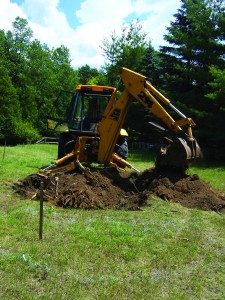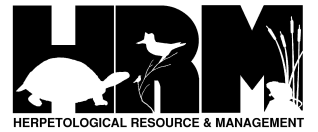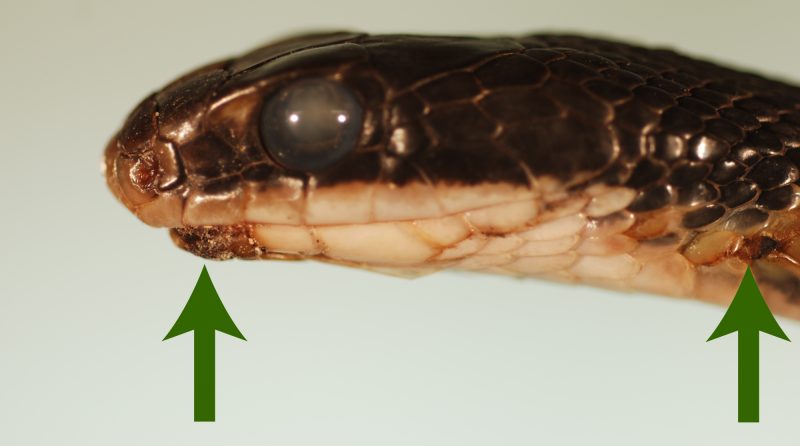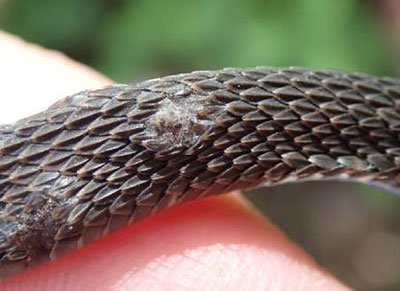Eastern Massasauga Rattlesnake Threats and Management
Habitat loss and Fragmentation
Habitat destruction, degradation, and fragmentation are among the most serious causes of EMR past and current EMR population declines. Development linked to urbanization and agricultural conversion eliminates not only critical EMR wetland habitats, but also the connectivity between those and adjacent upland communities. Habitat degradation and fragmentation also occurs through vegetative succession of open canopy habitats (often by invasive species such as European Buckthorn), which impacts basking opportunities, overwintering conditions, and alters prey communities. Fragmentation of critical EMR habitats can isolate seasonally used habitat within individual populations and restrict gene flow in an area. When living in a fragmented landscape, EMR are exposed to additional chances of injury or death, including increased risk of road mortality.
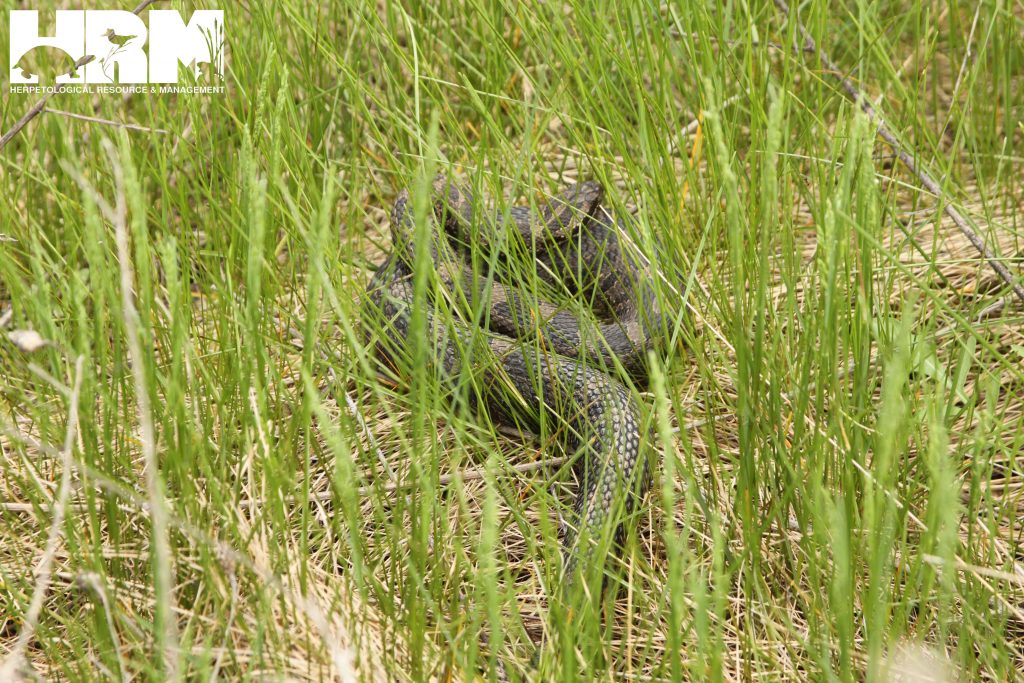
Persecution/Collection
Although historically a much larger issue, indiscriminate killing of snakes (particularly venomous species) continues to pose a threat to EMR. Individuals are also at risk for collection from the wild for use in the pet trade and traditional medicine practices. Gravid females are typically the most vulnerable to persecution and collection as they are often out in the open to meet their gestation needs. Because a majority of the remaining EMR populations are low in density, any of loss of animals can have a large impact on the long-term viability of the population.
Snake Fungal Disease
Snake Fungal Disease (SFD) also known as Ophidiomycosis is a newly emerging disease impacting snake populations across the United States. Recently, the disease was identified in EMR from a population in northern Michigan. Symptoms can include facial swelling, scale discoloration, and lesions. Although SFD is known to lead to snake mortality, population level impacts are not well understood.
Chances of spreading this disease between populations is greatly increased when proper cleaning of equipment between sites is not followed. Following established decontamination procedures and taking extra precautions when working with potentially affected populations is critical for preventing the further spread of this disease.
Potential cases of SFD in Michigan should be reported immediately.
DNR Wildlife Disease Laboratory
4125 Beaumont Rd., Room 250
Lansing, MI 48910-8106
Telephone: 517-336-5030
Improperly Timed Land Management Practices
Several land management activities that are often necessary for maintaining suitable EMR habitat also have potential for harming individuals or entire populations if appropriate timing and technique are not followed. Examples of such activities include:
- Altering wetland hydrology
- Prescribed fire
- Mowing/mechanical treatment
To learn more about how to conduct land management activities while preventing harm to EMR and other herpetofauna species, please visit the Michigan Amphibian and Reptile Best Management Practices Manual. You are also encouraged to contact HRM to help with management activities and timing
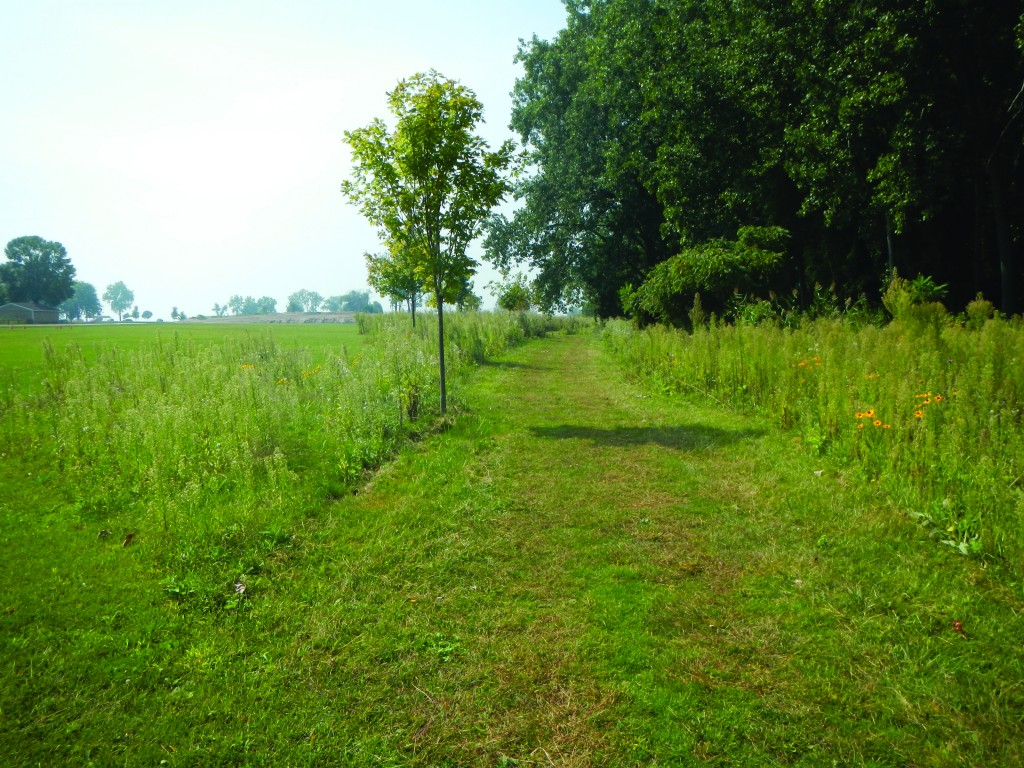
Managing Land with the EMR
Due its federal protection, certain actions are required before activities that may result in take of the species can be performed. HRM can help you through the process and steps necessary to avoid permits when possible through incorporation of BMP’s and minimization or if necessary obtaining a take permit.
Inventory and Monitoring
Before initiating work, steps are necessary to minimize negative impacts to protected species if present on a site. Tier I and Tier II analyses have been conducted by USFWS to help identify potential EMR habitat and locations. Baseline surveys may be required as part of permit conditions or project sign off. HRM can assist with your survey and project monitoring needs.
Should they be required HRM can assist with obtaining FWS and MDNR permits. We can also assist in developing habitat restoration plans, impact minimization, and project monitoring.
Candidate Conservation Agreement with Assurances (CCAA)
In response to the proposed listing of EMR, the U.S. Fish and Wildlife Service developed an agreement with the Michigan Department of Natural Resources (MDNR) and several other partners regarding the future management of EMR occupied properties. The purpose of this document is to encourage non-federal land-owners in Michigan to manage their properties in ways that are consistent with the long-term sustainability and persistence of EMR. This agreement ensures participants that perform land management by following guidelines and strategies contained within the document will be protected against the incidental take of the species.
Habitat Conservation Plan (HCP)
For land managers who did not sign up for the EMR CCAA in time, protection can also be provided through an incidental take permit and development of a Habitat Conservation Plan. HCPs allow landowners to legally proceed with an activity that otherwise may result in the illegal take of EMR.
- HRM is available and qualified for assisting in the development of HCPs targeting EMR habitat in Michigan
